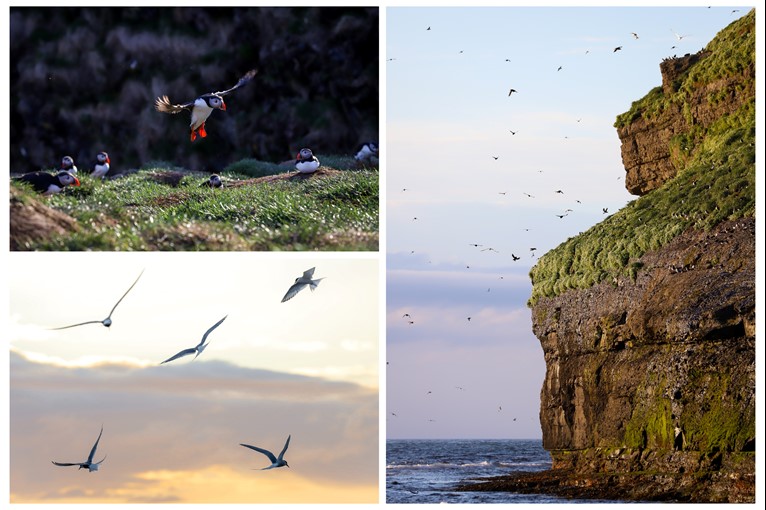THE FASCINATING WORLD OF BIRD NESTS

Along with all the whales, also numerous birds are migrating to Iceland for the summer months. Unlike whales though which come here for their feeding season, birds journey towards the North for their nesting season.
Birds are extraordinary animals. Interestingly, like us humans, they spend a lot of time in their homes - or more precisely, their nests. They have different architectural styles, construction sites, and ways of ensuring their comfort. Let's take a closer look at some of them.
Common Eiders
Common Eiders, known for their luxurious down, build nests in colonies in rocky crevices and dense vegetation. They are sea birds, but can also be found breeding by rivers and lakes up to 20 kilometres away from the sea. The down, which females pluck from their chests, is collected by Icelandic farmers from abandoned nests, always leaving some behind so the birds will return next season.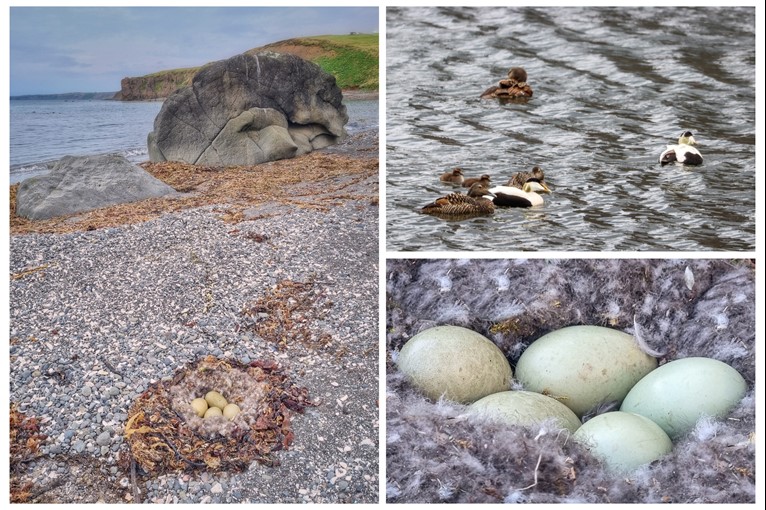
Puffins
Puffins are comical birds with large, colourful beaks, digging burrows into steep grassy slopes or cliffs. These tunnels can be over a meter long, and have a special space for the toilet.
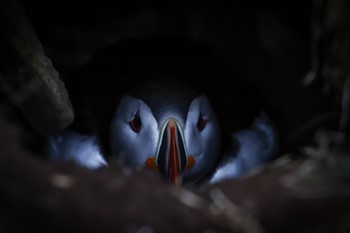
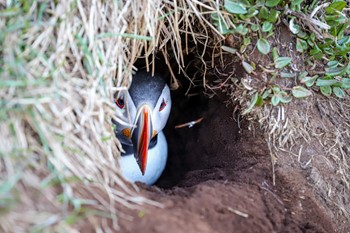
Fulmars
Fulmars nest in colonies on steep sea cliffs, sometimes also inland on cliffs or rocks. Their chicks can vomit a foul-smelling substance to deter predators – an effective way to defend the nest.
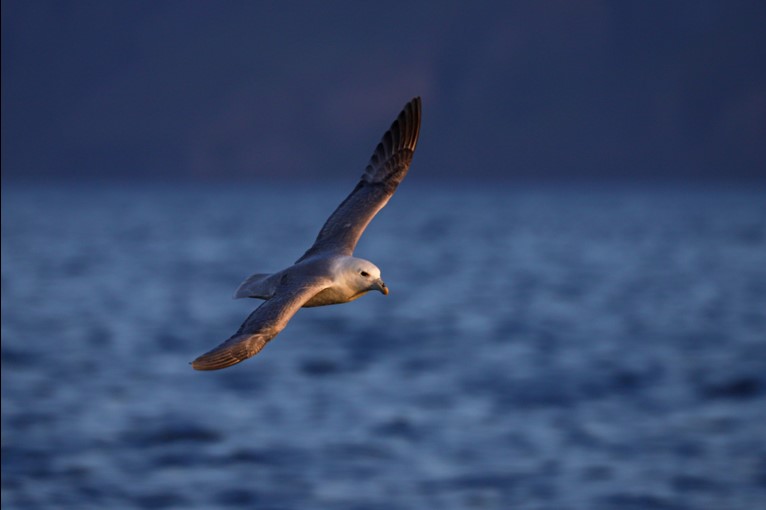
Gannets
Gannets build nests from seaweed on narrow rock ledges, forming tightly packed colonies. They are known for their spectacular diving from great heights in search for fish.
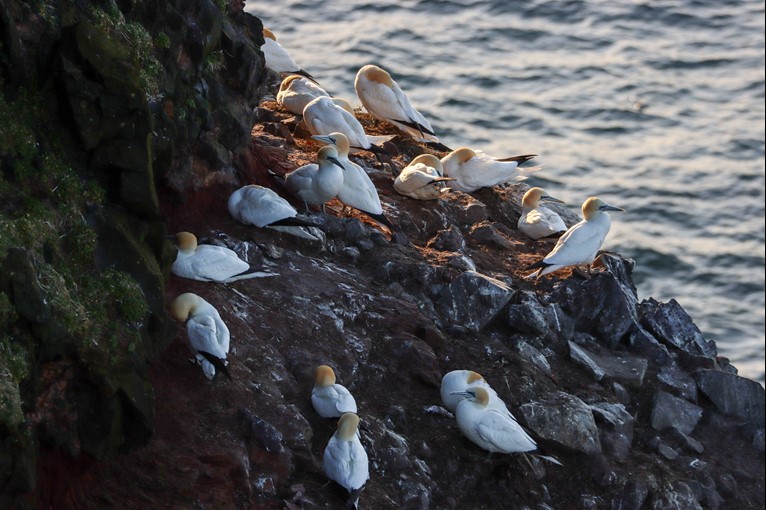
Gulls
Adaptive gulls build nests in various places – from rocky cliffs to building roofs. These noisy birds are often seen in large colonies, and their nests made of grass and seaweed are loosely built.
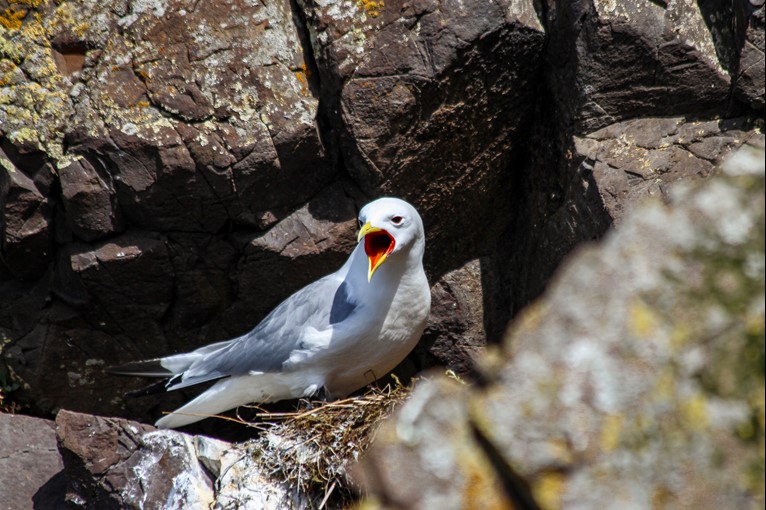
Arctic Terns
Arctic terns nest in open areas, creating shallow scrapes. Known for their long migrations, they travel up to 90,000 kilometres annually between the Arctic and Antarctica. When they arrive and nest, they fiercely defend it, screeching loudly and pecking at the heads of unwary passersby.
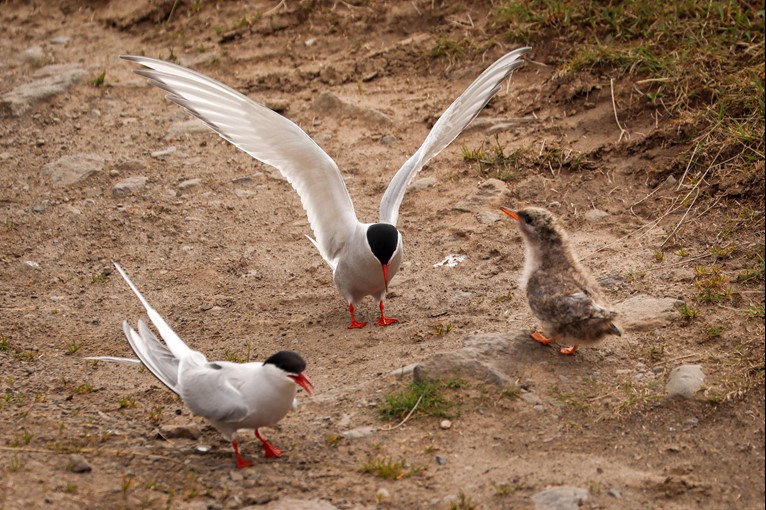
Cormorants
Cormorants live in colonies and build nests on flat skerries or rock stacks. They are excellent divers, spending a lot of time underwater searching for fish. These birds are often seen with wings widely spread - drying.
Golden Plovers
Golden plovers nest in tundra, moorlands, marshes, but also in well-vegetated lava fields. The nest is in open ground, built with dry grass. Their intermittent song is a characteristic sound of their breeding grounds.
Greylag Geese
Greylag geese nest in wetlands, lake shores, and riverbanks. Their nests, lined with down, are large and built from grass and leaves. The honking of these birds is one of the characteristic sounds of nature.
Whooper Swans
Whooper swans build large nests on islands and lake shallows. It is built with plant materials and lined with down. Swans’ loud, trumpeting calls can be heard from a distance, and their majestic appearance makes them some of the largest birds in Iceland.
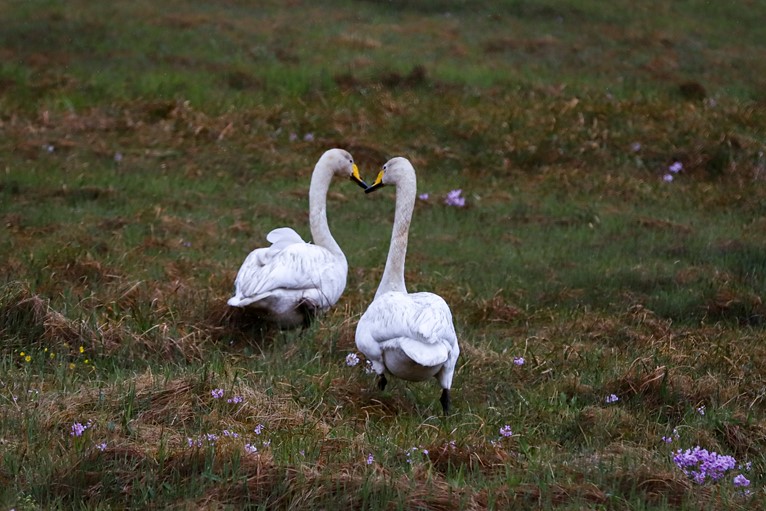
Great Skuas
Great skuas nest in gravel flats close to the sea or on outwash plains of glacial rivers. Their nests are also bare, depressions in the ground. Known for their aggressive nature, they often attack other birds and steal their food. Their simple nests are lined with grass and moss.
Parasitic Jaegers
Parasitic jaegers nest in different habitats - from mountains to moorlands. The nest is a scrap of vegetation on sandy outwash plains of glacial rivers. They live parasitically by chasing other seabirds and forcing them to drop their catch, which they then steal. Their nests are usually shallow depressions in the ground.
When joining us on a whale watching tour, stay on the lookout for all these species (and more!) – you will be surprised about all the birdlife around us, from the moment the boat is leaving the harbour.
While out at sea, we are likely to see fulmars, puffins, kittiwakes and various other gulls, guillemots, or a skua disturbing the peace of all other birds – especially by Puffin Island.
- Wit (guide)
